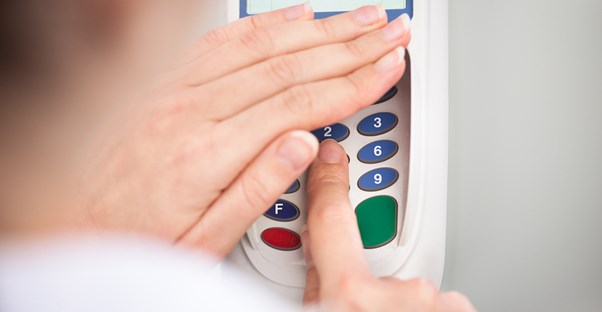Credit card data breaches appear to be in the headlines more than ever. Thankfully, you can expect increased security on your credit cards starting October 2015. You’ve probably seen the occasional computer chipped credit card, but these “chip and PIN” cards will soon be the standard. The shiny little chip embedded in these credit cards provides extra protection against fraud but do you know why these new cards are more secure?
Chip and Pin versus Magnetic Strip Cards
Here’s how a normal credit card works: the magnetic strip on the back of credit and debit cards holds data. Every time you swipe your card, the data is read and verified at the point of sale. The magnetic strip data is unique to your credit card. However, the same information is used for every single transaction you make; all a fraudster needs is that unchanging transaction code from your magnetic strip, and he can go wild.
In comparison, a chip and PIN card generates new transaction data for each individual purchase. After the data has been used, it expires, making it useless if a hacker got a hold of it. Card holders may also assign a PIN to their card, adding another layer of security to the transaction.
How to Use Your New Card
Chip and PIN credit cards are easy to use. Instead of swiping your card, you will insert it (chip-side inwards) to the point of sale terminal. It will take a few moments to process your payment, and voila! Some points of sale terminals are equipped with special readers that can process a sale with very little contact; all you need to do is tap your card against the terminal. Many big-name retailers and fast-food restaurants have already installed these terminals at the register, and about 120 million Americans already have chip cards.
Transitioning to Chip and PIN Nationwide
59% of retail locations are expected to have chip and PIN terminals by the end of 2015. Paying with your chip and PIN card at the pump may take a little longer; fuel pumps have a 2017 deadline. Until we’ve reached 100% chip and PIN compatibility, you can still use your new card by swiping it. The first batch of chip and PIN cards still have the magnetic strip for older terminals. In the meantime, you’ll be happy to learn about the new liability rules. If your card is compromised after October 1st, 2015, the party who is least EMV-compliant will be liable, be it the grocery store or the bank.
New Technology, New Possibilities
Bolstered security isn’t the only benefit to these new credit cards. You’ll also find traveling abroad to be easier as well—the world’s major markets have been using chip and PIN cards long before the United States. Next time you’re vacationing in Europe, you’ll face less difficulty when using your card. Many European merchants are wary of magnetic strip transactions, as they aren’t as secure as the chip and PIN card. And although the push is focused on credit cards, you can expect to receive chip and PIN debit cards later on.




